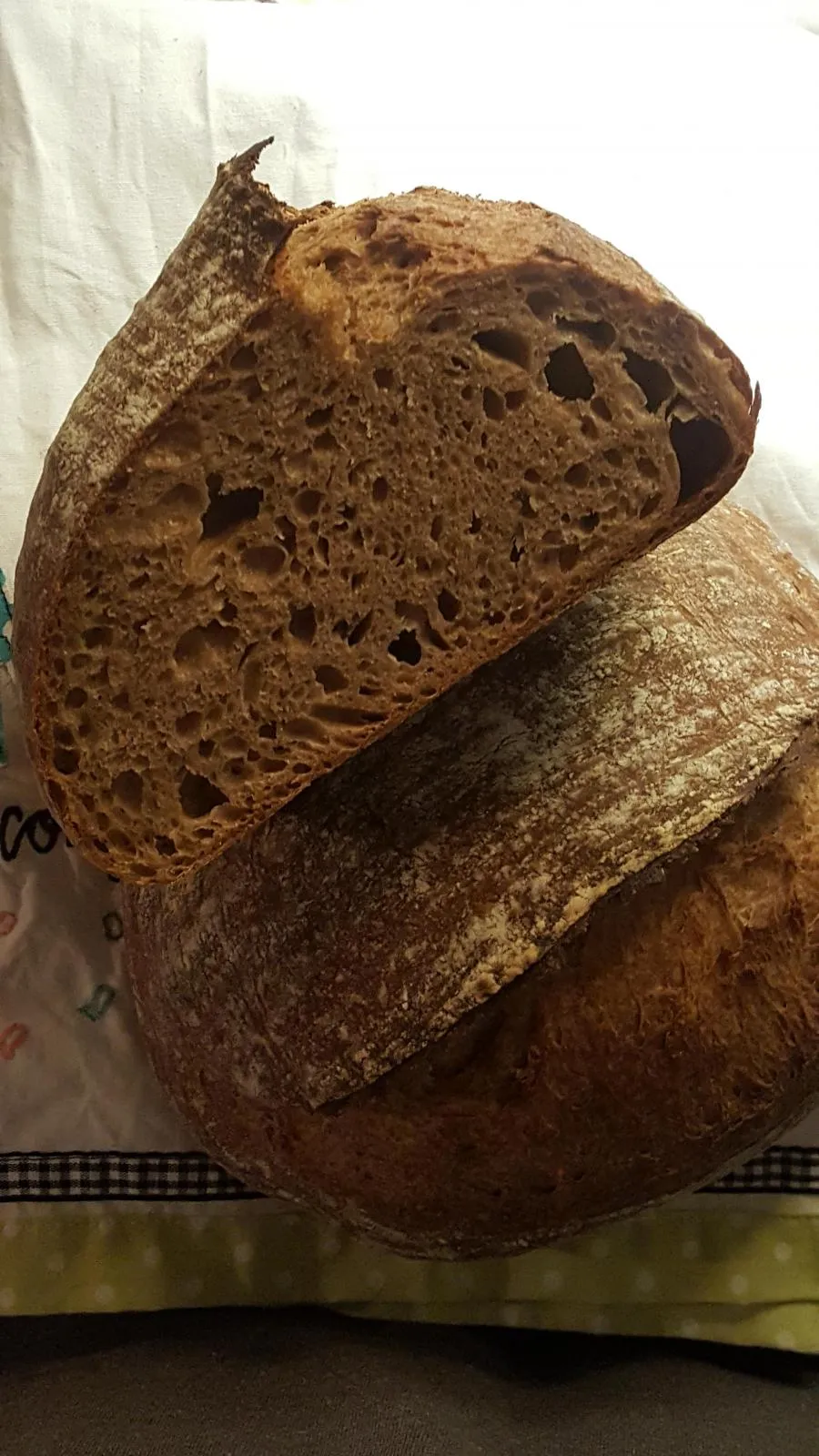
I’ve been using locally milled heirloom wheat flours with good results, better in my opinion than flours from KAF.
What puzzles me is that these heirloom wheats have falling number between 400-435, which would suggest I poor resulting loaf: poor rise and dry crumb. Instead, I have loaves that rise well, have a moist & pillowy crumb, and proof much quicker than the KAF flours I was using.
I am using Trevor’s recipe for 50% whole wheat sourdough: http://www.breadwerx.com/make-50-whole-wheat-sourdough-video/
How do I understand this apparent contradiction of high falling number yet well risen, moist crumb sourdough bread?
From the info I've read, 400-435 is good. A minimum of 300+ is desired. Your bread results make sense.
https://www.grainews.ca/2012/03/05/understanding-falling-numbers-in-wheat/
What I took away from the article you referenced is that FN should not be the only assessment (a flour with a high falling number may not be able to form high quality gluten) yet some alpha-amylase is needed to help convert starches to sugars. This would be what this graphic is indicating from the site linked below. A moderate falling number would be ideal.
https://www.perten.com/Products/Falling-Number/Applications/Flour-milling-and-baking/
If I understand this correctly, a high FN isn't great for yeasted breads but a sub-200 FN is much worse.